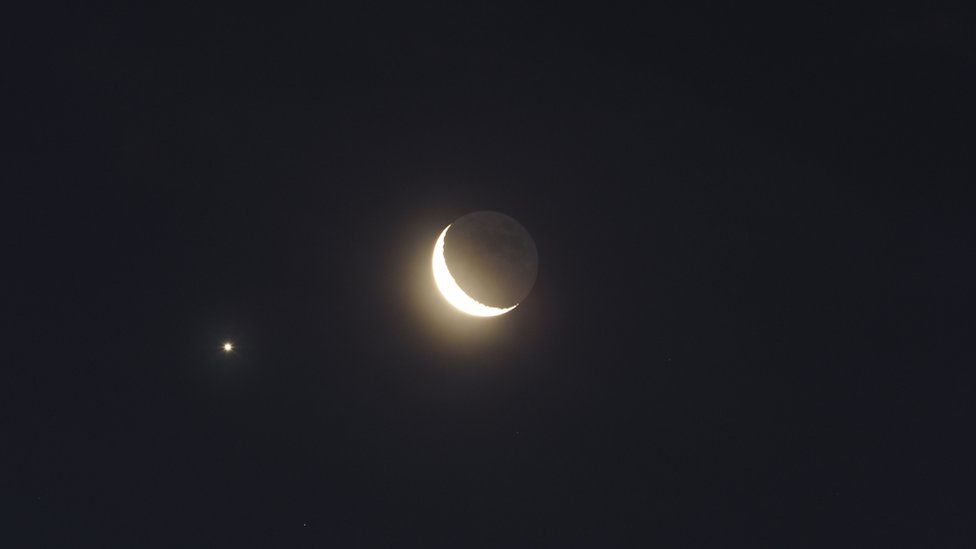ARTICLE AD BOX
 Image source, Getty Images
Image source, Getty Images
Jupiter, Venus, the Moon, and Mars should all be easily visible, however Uranus and Mercury might be more of a challenge
By Maddie Molloy
BBC News Climate & Science
Mercury, Jupiter, Venus, Uranus, Mars, and the Moon will align in an arc across the evening sky on Monday, with some visible to the naked eye.
This is often called "a planetary parade" and will be visible after sunset in the west.
A good view of the horizon and clear skies will offer the best chance of spotting the alignment.
Last summer Mercury, Venus, Mars, Jupiter, and Saturn came together in a rare planetary conjunction.
"To the naked eye, even from a bright city, Jupiter, Venus, the Moon, and Mars should be easily visible. Uranus should be visible with a medium-sized telescope, and Mercury is that added challenge for the very determined," said astronomer Jake Foster from Royal Observatory Greenwich.
He said that such alignments were very particular to our perspective from Earth.
"The planets aren't aligned right now, they are all spread out across the Solar System but just from our perspective, every once in a while they get close enough to each other in the sky that we're able to see quite a few at once," he said.
Give yourself the best shot at spotting them by getting away from any bright city lights as the Sun is going down. Go somewhere with a clear, unobstructed view. You need to be observing early in the evening because Mercury and Jupiter will quickly disappear over the horizon.
The easiest way to know whether you're looking at planets or stars is by looking at what type of light they are emitting.
"Stars twinkle but planets don't. So if you are are seeing a bright light that is steady and not flickering or twinkling and not blinking - because that might be a plane - then you are almost certainly looking at one of those planets," said Mr Foster.

 1 year ago
151
1 year ago
151








 English (US) ·
English (US) ·